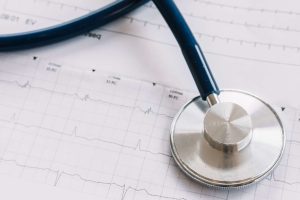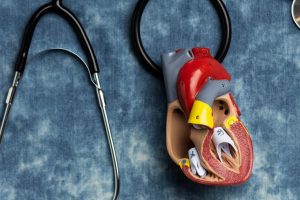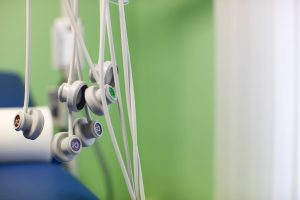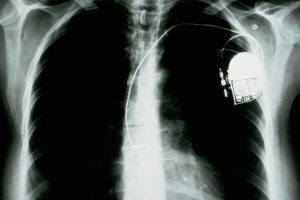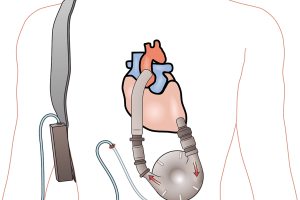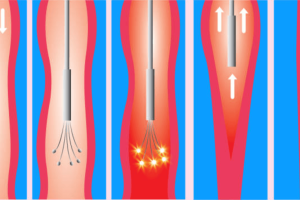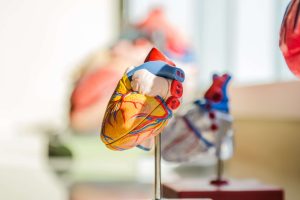The heart never takes a break. The heart is a strong muscle that never stops exercising, not for a minute. Every minute it needs blood, nourishment and oxygen. At Amarillo Heart Institute, we understand the importance of keeping your heart healthy and functioning at its best. We believe that a healthy heart is the foundation of a healthy life, and our goal is to provide you with all you need to achieve optimal heart health, a happier heart.
Implantable Cardioverter Defibrillator
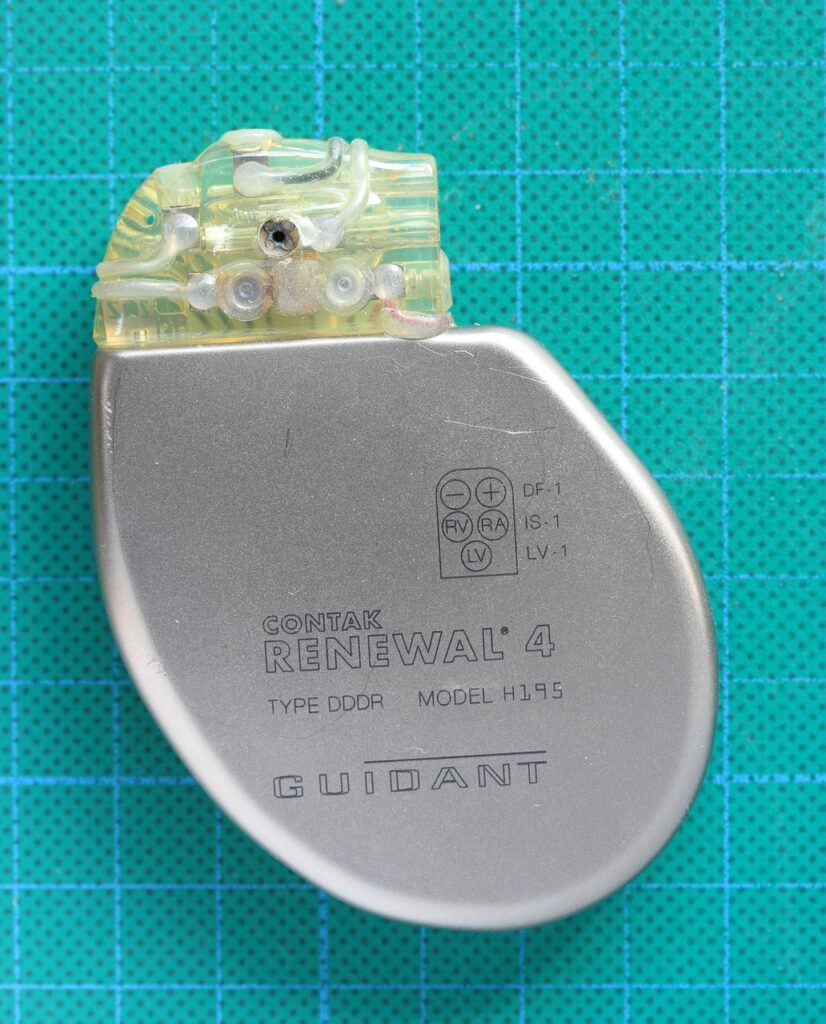
An Implantable Cardioverter Defibrillator (ICD) is a small, battery-powered device that is implanted under the skin of the chest to help regulate the heartbeat and prevent sudden cardiac arrest. It is similar in size to a pacemaker and is connected to one or more leads (thin wires) that are threaded through a vein and into the heart.
ICDs are usually recommended for people who are at high risk of sudden cardiac arrest, which can occur as a result of certain heart conditions such as arrhythmias or heart failure. An ICD can help prevent sudden cardiac arrest by quickly delivering a shock to the heart to restore its normal rhythm. These conditions may include:
A history of cardiac arrest: Cardiac arrest is a sudden loss of heart function that occurs when the heart’s electrical system malfunctions. This causes the heart to stop beating or to beat in an irregular, ineffective way. When this happens, blood is no longer pumped throughout the body, which can quickly lead to organ damage or death if not treated immediately. Cardiac arrest is different from a heart attack, which occurs when blood flow to the heart is blocked, but the heart is still beating.
Certain types of arrhythmias, such as ventricular fibrillation (a rapid, irregular heartbeat) or ventricular tachycardia (a fast heartbeat that originates in the lower chambers of the heart)
Certain types of heart failure, especially if the heart’s ejection fraction (a measure of how much blood the heart pumps out with each beat) is less than 35 percent.
Candidates for ICD insertion will need to undergo a thorough evaluation by a cardiologist to determine if they are a good candidate for the procedure.

An Implantable Cardioverter Defibrillator (ICD) is a small, battery-powered device that is implanted under the skin of the chest to help regulate the heartbeat and prevent sudden cardiac arrest. It is similar in size to a pacemaker and is connected to one or more leads (thin wires) that are threaded through a vein and into the heart.
ICDs are usually recommended for people who are at high risk of sudden cardiac arrest, which can occur as a result of certain heart conditions such as arrhythmias or heart failure. An ICD can help prevent sudden cardiac arrest by quickly delivering a shock to the heart to restore its normal rhythm.
These conditions may include:
A history of cardiac arrest: Cardiac arrest is a sudden loss of heart function that occurs when the heart’s electrical system malfunctions. This causes the heart to stop beating or to beat in an irregular, ineffective way. When this happens, blood is no longer pumped throughout the body, which can quickly lead to organ damage or death if not treated immediately. Cardiac arrest is different from a heart attack, which occurs when blood flow to the heart is blocked, but the heart is still beating.
Certain types of arrhythmias, such as ventricular fibrillation (a rapid, irregular heartbeat) or ventricular tachycardia (a fast heartbeat that originates in the lower chambers of the heart)
Certain types of heart failure, especially if the heart’s ejection fraction (a measure of how much blood the heart pumps out with each beat) is less than 35 percent.
Candidates for ICD insertion will need to undergo a thorough evaluation by a cardiologist to determine if they are a good candidate for the procedure.
how Implantable cardioverter defibrillator WORKS
An ICD (Implantable Cardioverter Defibrillator) is a small device that is implanted under the skin of the chest to help regulate the heartbeat and prevent sudden cardiac arrest. Here is a more detailed explanation of how an ICD works:
Monitoring heart rhythm: The ICD continuously monitors the heart’s rhythm through one or more leads (thin wires) that are threaded through a vein and into the heart. The leads can detect abnormal heart rhythms, such as ventricular tachycardia or ventricular fibrillation, which can lead to sudden cardiac arrest.
Delivering therapy: If the ICD detects an abnormal heart rhythm, it can deliver several types of therapy to restore the heart’s normal rhythm. The therapy is delivered through the leads and can include:
Anti-tachycardia pacing: This is a series of rapid pacing pulses that can interrupt a fast heart rhythm and restore normal rhythm.
Cardioversion: This is a low-energy shock that is delivered to the heart to restore a normal rhythm.
Defibrillation: This is a high-energy shock that is delivered to the heart to restore a normal rhythm during a life-threatening ventricular fibrillation or ventricular tachycardia.
Recording data: The ICD can also record data about the heart’s rhythm and any therapy delivered. This data can be downloaded and reviewed by a healthcare provider during a routine check-up or if there are any concerns about the device’s function.
Overall, the ICD is designed to quickly detect and treat life-threatening abnormal heart rhythms to prevent sudden cardiac arrest and improve the patient’s chances of survival.
ICD additional information
What happens during the procedure?
ICD insertion is typically done under local anesthesia and sedation. During the procedure, the doctor will make a small incision in the chest and insert the ICD under the skin. One or more leads will be threaded through a vein and into the heart, where they will be positioned to monitor the heart’s rhythm and deliver electrical shocks if necessary. The procedure usually takes a few hours to complete.
Recovery and follow-up
After the procedure, patients will need to stay in the hospital for a short period of time for monitoring. It is important to avoid strenuous activity and heavy lifting for several weeks after the procedure, as this can interfere with the healing process. Patients will also need to attend follow-up appointments with their cardiologist to ensure that the ICD is functioning properly and to make any necessary adjustments to its settings.
Risks and complications
Like any medical procedure, ICD insertion carries some risks and potential complications. These may include infection, bleeding, damage to the heart or blood vessels, or complications related to the use of anesthesia. However, serious complications are relatively rare.
Benefits
- Reduction in the risk of sudden cardiac arrest
- Improved quality of life
- Increased survival rates for people with certain heart conditions
- Greater peace of mind for people who are at high risk of sudden cardiac arrest.
Overall, ICD insertion is a safe and effective way to help manage certain heart conditions and reduce the risk of sudden cardiac arrest. Patients considering this procedure should discuss the risks and benefits with their cardiologist to determine if it is the right choice for them.

